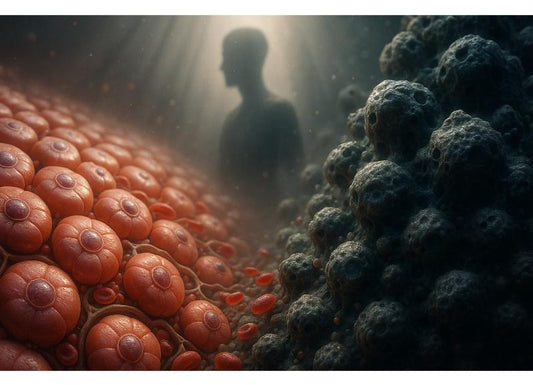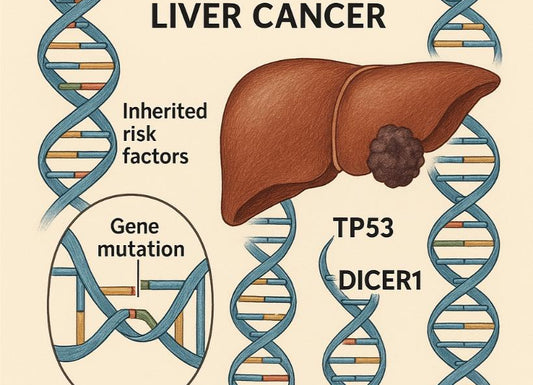What Are the 4 Stages of Cirrhosis of the Liver? Understanding Progression and Care
 Written By
Abel Tamirat, MD
Written By
Abel Tamirat, MD

Cirrhosis is the result of long-term, continuous liver damage that leads to scarring and reduced liver function. Understanding the stages of cirrhosis helps patients and caregivers recognize symptoms early, slow disease progression, and manage complications more effectively.
This article explains the four key stages of cirrhosis, what happens at each phase, and how treatment and lifestyle choices can impact long-term outcomes.
What Is Cirrhosis of the Liver?
The liver is responsible for vital functions such as filtering toxins, producing bile, and managing energy. When it becomes inflamed or damaged — due to causes like hepatitis, alcohol use, or fatty liver disease — scar tissue gradually replaces healthy tissue.
Cirrhosis describes the advanced scarring that disrupts the liver’s normal structure and function. Although damage cannot be reversed, early intervention can slow or stop further progression.
The 4 Stages of Cirrhosis
Doctors typically divide cirrhosis into four stages, from mild inflammation to severe liver failure. Each stage reflects the extent of scarring and how well the liver can still perform its functions.
Stage 1: Compensated Cirrhosis (Mild Damage)
In this early stage, scar tissue begins forming, but enough healthy liver cells remain to maintain normal function. Many people have no symptoms and may not realize they have cirrhosis until it’s detected through blood work or imaging.
Common signs:
-
Fatigue.
-
Mild abdominal discomfort.
-
Occasional nausea or poor appetite.
What’s happening in the liver:
-
Inflammation and early scarring (fibrosis) are present.
-
The liver can still regenerate and function relatively well.
Treatment focus:
-
Identifying and managing the cause (such as stopping alcohol or treating hepatitis).
-
Adopting a liver-friendly diet and lifestyle.
-
Monitoring liver enzymes and imaging regularly.
With early treatment, Stage 1 cirrhosis can remain stable for years.
Stage 2: Compensated Cirrhosis with Portal Hypertension
At this stage, scar tissue restricts blood flow through the liver, leading to increased pressure in the portal vein — the major vessel that carries blood from the digestive organs to the liver.
Symptoms may include:
-
Enlarged spleen.
-
Mild swelling in the legs (edema).
-
Spider veins on the skin.
What’s happening in the liver:
-
Blood flow becomes sluggish.
-
The liver struggles to filter toxins efficiently.
Treatment focus:
-
Managing portal hypertension with medications.
-
Monitoring for esophageal varices (enlarged veins that can bleed).
-
Maintaining nutrition and hydration.
Stage 2 is still considered compensated, meaning the liver performs enough vital functions to sustain normal life, though it’s under strain.
Read on to explore our complete guide to at-home kidney function testing and how it works.

Stage 3: Decompensated Cirrhosis (Advanced Damage)
In this stage, the liver can no longer compensate for the loss of function. Toxins build up, and fluid accumulates in the body.
Common symptoms:
-
Jaundice (yellowing of skin and eyes).
-
Significant fluid retention in the abdomen (ascites).
-
Confusion or memory problems (hepatic encephalopathy).
-
Easy bruising or bleeding.
-
Fatigue and muscle wasting.
What’s happening in the liver:
-
Extensive scar tissue limits blood flow and detoxification.
-
The liver’s regenerative capacity is overwhelmed.
Treatment focus:
-
Managing symptoms with medication (diuretics, lactulose).
-
Regular paracentesis (fluid removal) if ascites is severe.
-
Screening for liver cancer (hepatocellular carcinoma).
-
Evaluating for liver transplant eligibility.
Stage 3 cirrhosis often marks the point when hospitalization and close medical monitoring become necessary.
Stage 4: End-Stage Liver Disease (ESLD)
The final stage of cirrhosis is end-stage liver disease, where the liver fails almost completely. The body cannot remove toxins or regulate essential processes such as blood clotting or fluid balance.
Symptoms include:
-
Severe jaundice.
-
Persistent confusion.
-
Internal bleeding (variceal bleeding).
-
Kidney dysfunction.
-
Extreme fatigue and weakness.
Treatment focus:
-
Palliative care for comfort.
-
Managing complications to improve quality of life.
-
Liver transplant as the only curative option.
Without transplantation, end-stage liver failure can be fatal. However, many patients who qualify for transplant experience long-term survival and improved quality of life.
Read on in our UTI testing guide to better understand symptoms and treatment.
Compensated vs. Decompensated Cirrhosis

Doctors often group the stages into two broader categories:
-
Compensated Cirrhosis (Stages 1–2): The liver can still function relatively well.
-
Decompensated Cirrhosis (Stages 3–4): The liver is severely scarred and symptoms become life-threatening.
Recognizing this distinction is crucial for treatment planning and prognosis.
How Long Can You Live with Cirrhosis?
Life expectancy depends on the stage of cirrhosis, the underlying cause, and how well it’s managed.
-
Early stages: With proper care and treatment, many people live 10–20 years or more.
-
Decompensated stages: Life expectancy can range from months to a few years without transplant.
Regular monitoring, abstaining from alcohol, and controlling related conditions such as diabetes or fatty liver disease significantly improve outcomes.
Read on in our article about glucose in urine to learn about causes and symptoms.
How to Slow Cirrhosis Progression
![]()
While scar tissue cannot be removed, you can help slow or stop liver damage through proactive care:
-
Avoid all alcohol and liver-toxic substances.
-
Eat a balanced, low-sodium diet.
-
Get vaccinated against hepatitis A and B.
-
Maintain a healthy weight.
-
Manage diabetes and cholesterol levels.
-
Follow all prescribed treatments and attend regular checkups.
When to See a Doctor
See your healthcare provider if you experience:
-
Persistent fatigue or weakness.
-
Yellowing of the skin or eyes.
-
Swelling in your legs or abdomen.
-
Confusion, memory loss, or disorientation.
-
Unexplained weight loss or appetite changes.
Early detection and treatment of liver disease can make a significant difference in slowing its progression.
Read on in our overview of the Ribbon Checkup urine test to see how home testing can support your health.
The Bottom Line
Cirrhosis develops in four progressive stages, beginning with mild scarring and potentially ending with liver failure. Recognizing symptoms early and addressing the underlying cause — whether alcohol, hepatitis, or fatty liver — can prevent severe complications.
With lifestyle changes, medical treatment, and regular monitoring, many people with cirrhosis can maintain a good quality of life for years.
Want to monitor your liver health from home?
You can take an at-home liver function and metabolic health test through Ribbon Checkup and get results in days.
Related Resources
-
Liver Pain Location: Understanding Its Causes and Symptoms – Spot the main causes and symptoms.
-
What Can Be Mistaken for Liver Pain? – Conditions that mimic liver discomfort.
-
Gallbladder Pain vs. Liver Pain – How to tell them apart.
References
Kumar, R., Kumar, S., & Surya Prakash, S. (2023). Compensated liver cirrhosis: Natural course and disease-modifying strategies. World Journal of Methodology, 13(4), 179-193. https://doi.org/10.5662/wjm.v13.i4.179
Ramesh K., Sudhir K., & Sabbu S. P. (2023). Compensated liver cirrhosis: Natural course and disease-modifying strategies. World Journal of Methodology, 13(4), 179-193. https://pmc.ncbi.nlm.nih.gov/articles/PMC10523240/
“Stages of Cirrhosis” – Viral Hepatitis and Liver Disease (U.S. Department of Veterans Affairs). (2018, August). https://www.hepatitis.va.gov/cirrhosis/background/stages.asp
Tapper, E. B., & Parikh, N. D. (2023). Back to basics: Outpatient management of cirrhosis. Liver Fellow Network – AASLD. https://www.aasld.org/liver-fellow-network/core-series/back-basics/back-basics-outpatient-management-cirrhosis
“Overview, Epidemiology, Diagnosis of Cirrhosis: Introduction.” (2024, March). eMedicine. https://emedicine.medscape.com/article/185856-overview
“Cirrhosis: Diagnosis and Management.” (2019, December). American Family Physician, 100(12), 759-770. https://www.aafp.org/pubs/afp/issues/2019/1215/p759.html
“Liver Cirrhosis: Evolving Definitions and Recent Advances.” (2023). Current Oncology, 5(3), 28. https://doi.org/10.3390/curoncol5030028
“Update in the Treatment of the Complications of Cirrhosis.” (2023). Clinical Gastroenterology and Hepatology, S1542-3565(23)00227-6. https://doi.org/10.1016/j.cgh.2023.00227
“Natural history of cirrhosis is characterised by an asymptomatic compensated phase followed by a decompensated phase…” (2018). Journal of Hepatology, 69(2), 406-460. https://doi.org/10.1016/j.jhep.2018.10.001
Zhang, L., & Li, M. (2024). Recent insights into contributing factors in the pathogenesis of cirrhosis. Frontiers in Medicine, 11, 1376217. https://doi.org/10.3389/fmed.2024.1376217

Dr. Abel Tamirat is a licensed General Practitioner and ECFMG-certified international medical graduate with over three years of experience supporting U.S.-based telehealth and primary care practices. As a freelance medical writer and Virtual Clinical Support Specialist, he blends frontline clinical expertise with a passion for health technology and evidence-based content. He is also a contributor to Continuing Medical Education (CME) programs.



